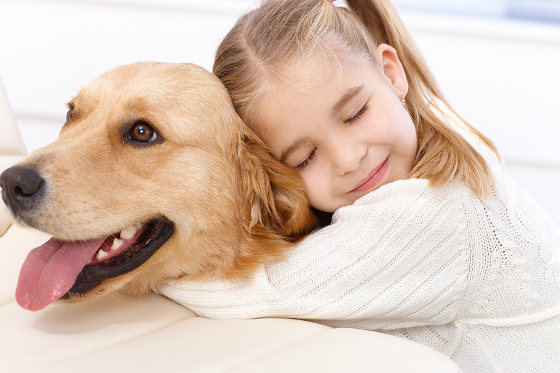Many pet lovers choose to travel with their pets, and private aircraft, for a variety of reasons, are a better option for safe and comfortable pet travel. On a private jet, all pets, not just those small enough to fit under the seat, can travel in the main cabin, and they may also be able walk around unrestrained when the plane is at a comfortable cruising altitude.

Furthermore, owners of multiple pets are able to take all of their pets on a private jet, and there's usually no additional fee for pets – a major benefit over commercial aircraft. The only additional fee you may see, is if there is a clean up fee due to your pet making a mess.
There are a few things to consider when traveling with pets on a private aircraft. I checked with Sentient Jet, one of the largest charter companies, who recommends that guests with pets travel with food and water. For convenience, they are able to have treats or food on board for guests who request that in advance. Sentient is also able to help guests research immunization and medical requirements for international destinations – be sure to have your up-to-date records with you.
Sentient also recommends that guests with pets travel with weight-appropriate leashes and harnesses to secure larger pets especially during take-off and landing, a recommendation that is echoed by Veterinarian Dr. Jessica Vogelsang, who also runs the Pawcurious website. According to Dr. Vogelsang, "Even if the private carrier allows you to have the pet out during the flight, you'll need a safe way to restrain them should you encounter turbulence and to keep them safe for takeoff and landing". Dr. Vogelsang recommends that your carrier have enough room for the pet to stand up fully and turn around in, and notes that the choice between a soft-sided carrier, a rigid plastic, or a wire crate depends on the pet's preference.
For those pet owners whose animals have anxiety or motion sickness, Dr. Vogelsang recommends making an appointment with your veterinarian about a week before you leave. There are medications that may be able to help, but your vet will need to weigh the risks and benefits.
Finally, like Sentient, Dr. Vogelsang recommends bringing along food and water, and suggests purchasing a travel-safe bowl to minimize tipping. She also recommends traveling with a portable, disposable litter tray – even something as low-tech as a plate with a scoop of litter works well.
Regardless of how you plan to travel with your pet, you should always talk to your aviation company in advance to obtain their latest guidelines for traveling with pets so that you are fully prepared. The largest companies transport thousands of furry passengers each year, so are well versed in all the things to consider.

